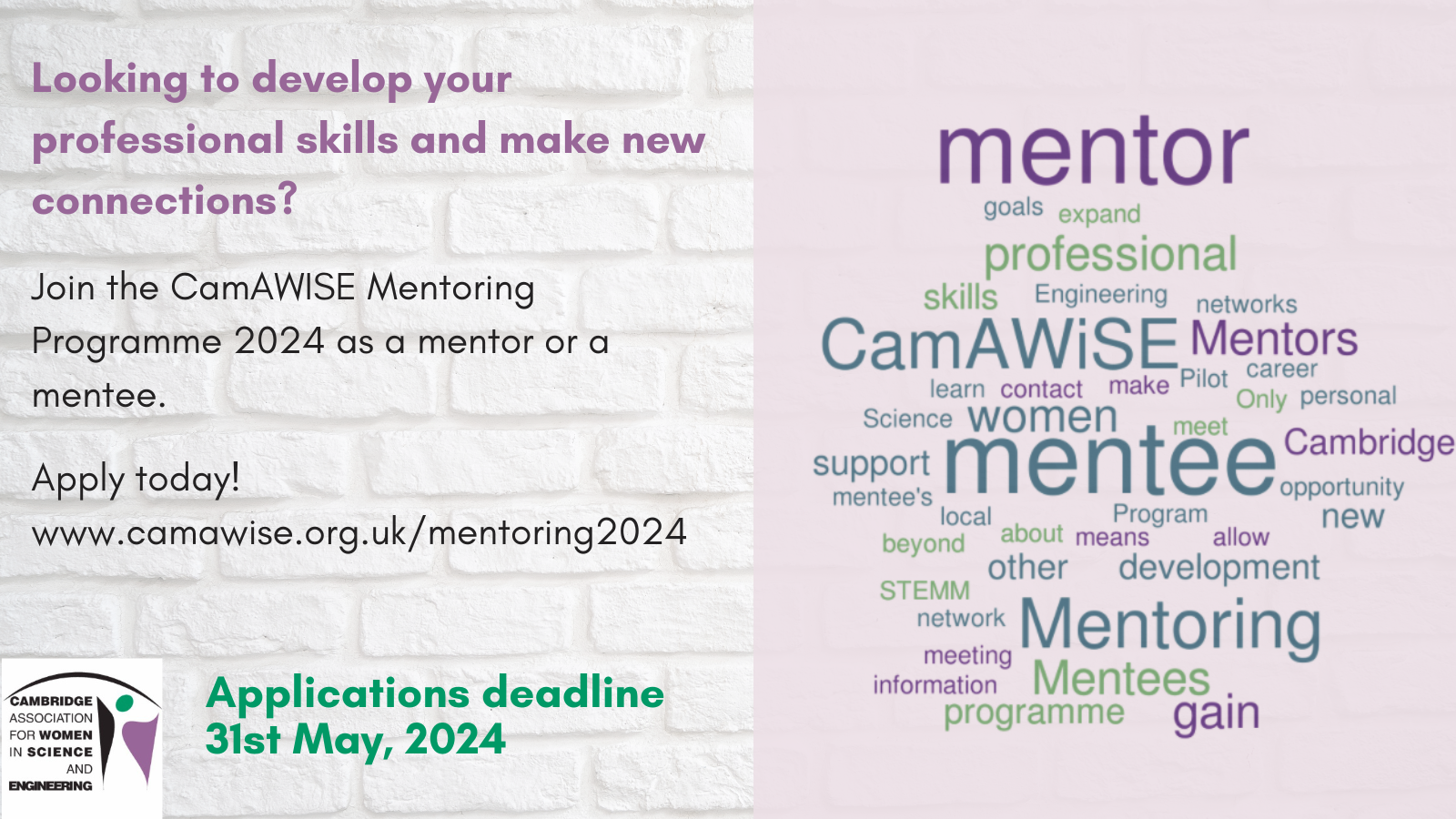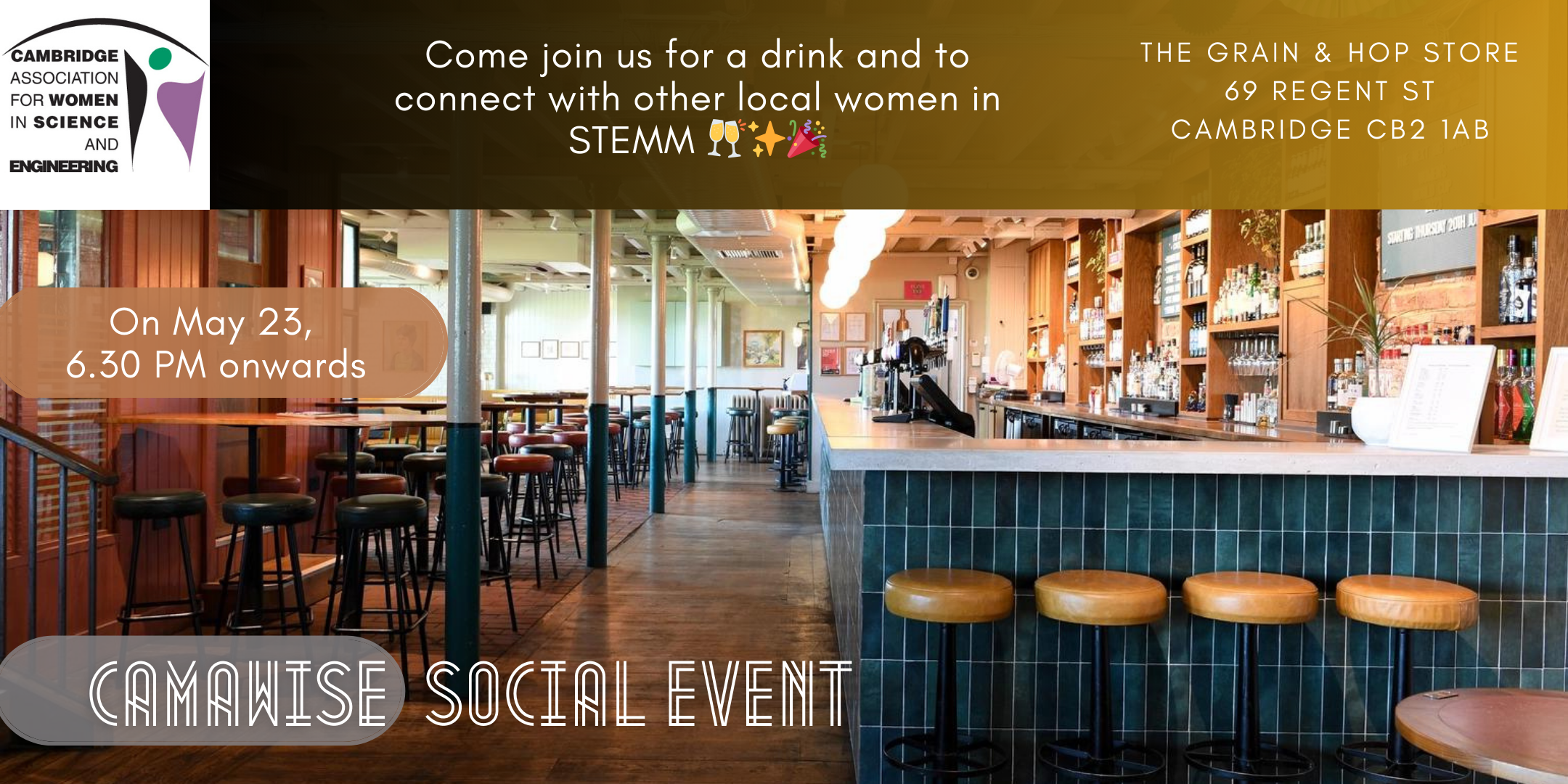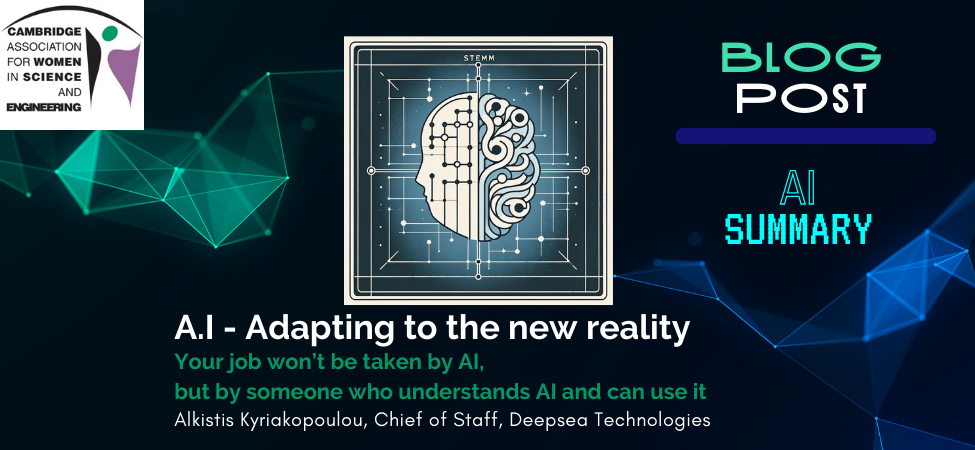What next for your career in Science – by Penny Coggill
 There were some 70 participants at this our 9th annual meeting at the LMB. Held on 9th June, this lunchtime event was ably organised by Alex Philips at the LMB and Gayle Sullivan for AWiSE.
There were some 70 participants at this our 9th annual meeting at the LMB. Held on 9th June, this lunchtime event was ably organised by Alex Philips at the LMB and Gayle Sullivan for AWiSE.
All three speakers were alumnae of the LMB, so their careers truly resonated with the audience. We were presented with three very different personalities with three very different career-outcomes; but all had worked and studied hard, knew their subjects backwards and chosen where their hearts lay and what suited their personalities rather than an ‘ought’. They were all hugely enthusiastic about what they were doing.
The first speaker was Milka Sarris who is pursuing her career in academia.
After a brief romp through her projects at PhD and post-doc level she explained the turning point when she realised that she wanted to pursue her research and had decided what area she would work in, and she then gave us valuable hints on how to gain a fellowship.
Initial work with regulatory T-cells – broadly immunology, with Prof Alex Betz – was followed by mouse-work, transferring very specific rare cells into pregnant mice. The mouse -work convinced her: a) that she never wanted to do an experiment on a live mouse again, and b) that she really wanted to do live-imaging of interactions at the cellular level. Cell signalling and communication was being studied in the mouse-model everywhere, the mouse-leukocyte as the universal immunological test-environment. So in order to make a niche for herself she went for using the transparent zebrafish as a model instead, and found only three labs round the world where this was on-going.
She chose the Pasteur institute in Paris where her supervisor would be Philippe Herbomel, who would give her excellent encouragement, laid-back supervision and advice and allow her to become independent, where she was imaging the gradients of the attractant chemokines during development.
Her tips for gaining a fellowship, which she has now in the department of Physiology, Development and Neuroscience http://www.pdn.cam.ac.uk/ are:
A. Tick all the boxes, of :
Good track record
Evidence of independence
Host institute with good facilities
You are asking important and interesting questions
An original and feasible research project
B. You must stand out
Show what gives you the edge
Visibility; campaign for yourself
Hints:
Change is good – gives you flexibility and wider working knowledge
Work in an excellent environment
Be strategic when choosing post-doc positions
Take risks
Be flexible and opportunistic
Mentoring – use your mentors
Go for what you enjoy and what drives your curiosity.
‘If you walk on thin ice, you might as well dance’ – Alex Betz.
The next speaker was Katherine Brown, who is now the Executive editor of the journal Development.
Development is one of the journals produced by the Company of Biologists, in Histon, http://www.biologists.com/, a charitable, not-for-profit publishing company that rescued the journal of Development and Experimental Biology and exists to support biologists by facilitating meetings, helping research societies and offering travel grants, amongst other things.
Katherine read Nat. Sci.-genetics at Cambridge, did her PhD at the LMB on Drosophila eye-development, and followed this with a carefully-chosen move to EMBL in Heidelberg where it was possible to image morphogenesis but not in the Drosophila, rather in zebrafish again, where she studied cell migration and adhesion in early development. Frustration due to being unable to do genetics in fish, she was encouraged while at EMBL to consider editing and publishing which she found she rather enjoyed. Eventually she secured a post with the EMBO journal as a Scientific Editor, realising that she liked talking about other people’s experiments rather than her own.
Her interests still lay fundamentally with development and EMBO did not publish in that field, so she became the Executive Editor of Development.
Katherine gave a run-down of the different editorial responsibilities:
A. Scientific Editor – handles the passage of a paper through to publication:
• triage the papers that come in – perhaps three every day
• coordinate peer review
• make acceptance/rejection decisions
B. Review/news/Views Editor
• Commissions/edits/writes non-research content
C. Copy/Production Editor – a nuts-and bolts person
• Copy edits
• Figure-processing
• Coordinating issues
D. Executive/Managing Editor
• oversee content and workflows
• managerial
• strategy for journals
• ethics
• marketing
• networking
•
The Pros of a life in Publishing:
• learn something new every day
• broad over-view
• not a 2nd-best career choice
• job satisfaction from publishing good stuff
• short-term deadlines
Cons:
• always need to be diplomatic
• authors may be aggressive when rejected
• high pressure and workload
• can become routine
• need to be able to get out of the office
To start practising:
• Have a strong science background
• enjoy reading/discussing results
• good communicator
• good writing skills
• good at constructive criticism
• blog
• do freelance editing
• review papers
• do internships – there are some paid ones
Our third speaker was Elise Bernard, an organic peptide chemist working now for MedImmune in Cambridge.
Elise’s PhD at ENSIC in Nancy had been in organic-peptide chemistry after which her wish was to work for the CNRS in France, so she went to Amsterdam for her proper first postdoc. She was making cyclised dipeptides, an exciting and successful venture, and after moved to the Royal College of Surgeons in Ireland for two years to make antithrombotic peptido-mimetics. By now she realised that she had travelled and worked abroad, learnt to see life both as an academic and as a chemist, and what’s more had picked up a number of really useful techniques in molecular biology as she was collecting, preparing and purifying her own plasma and platelets. She had learnt to overcome cultural differences and was now able to see life as a biologist. Friends encouraged her to go into industry rather than the CNRS, so she chose a small biotech company in Paris called Theraptosis where she was one of 19 people all of whom had to multi-task. Here she learnt to see life with an industrial eye, being exposed to patents, IP, secrecy and finance. The company ran into difficulties so she looked around and moved to the UK and found herself a post-doc position at the LMB with Sir Greg Winter designing bicyclic peptides to make novel constructs and launch new patents. She found she was helping to create Bicycle Therapeutics and was successfully filing new patents. So, what to do at the end of her LMB post-doc? Remaining in the UK and going into industry offered the best options – she joined MedImmune – a large biotech company – as a peptide chemist. By now she knew how to comply with the strict rules and regulations of industry and settled down to enjoy her work. She has learnt to be flexible and adapt to different cultures and different working-environments and finds her work very rewarding.
Her life maxim has been: “If plan A doesn’t work, there are 25 more letters in the alphabet” from Claire Cook.
There was lively discussion of questions from the audience to the panel, which was followed by an excellent buffet lunch, courtesy of the LMB.







